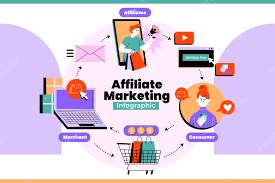
In today's digital era, blogging has emerged as a prominent form of online communication, enabling individuals to express their thoughts, share information, and connect with a vast audience across the globe. From personal diaries to professional platforms, blogs have become an integral part of the online landscape.
Blogging refers to the act of creating and maintaining an online platform, commonly known as a blog, where individuals or groups of individuals regularly publish and share their thoughts, ideas, opinions, experiences, and knowledge in a chronological order. Blogs usually incorporate a variety of multimedia elements such as text, images, videos, and hyperlinks, providing an interactive and engaging experience for readers.
The origins of blogging can be traced back to the early 1990s when the first instances of online diaries appeared. These were simple personal websites where individuals shared their daily experiences and thoughts. As technology advanced, the concept of blogging expanded, leading to the development of dedicated platforms and tools that made it easier for people to create and manage their blogs.
The term "weblog" was coined in 1997 by Jorn Barger, which was later shortened to "blog" by Peter Merholz in 1999. Blogging gained significant traction in the early 2000s, with the introduction of user-friendly platforms such as Blogger and WordPress. These platforms allowed individuals with little technical expertise to create their own blogs and publish content easily.
Types of Blogs
Blogs can be categorized into various types based on their content and purpose. Some common types of blogs include:
a. Personal Blogs: These blogs are akin to online diaries, where individuals share their personal experiences, thoughts, and interests. Personal bloggers often create a connection with their readers by sharing relatable stories and insights.
b. Professional Blogs: Professional blogs are focused on a specific niche or industry, where experts or enthusiasts share their knowledge, insights, and expertise. These blogs cater to a target audience and provide valuable information related to their field.
c. Corporate Blogs: Many businesses and organizations maintain blogs as a means of connecting with their customers, promoting their products or services, and establishing thought leadership in their respective industries.
d. Niche Blogs: Niche blogs focus on specialized topics such as fashion, travel, technology, health, finance, and more. These blogs target specific audiences who share a common interest in the chosen niche.
e. News Blogs: News blogs provide timely updates on current events, politics, sports, entertainment, and other news-worthy topics. They often offer an alternative perspective and analysis compared to traditional media outlets.
Benefits of Blogging
Blogging offers numerous advantages to both the creators and the readers. Some key benefits include:
a. Creative Outlet: Blogging provides a platform for individuals to express their creativity, thoughts, and ideas. It allows writers to develop their writing skills and experiment with different writing styles.
b. Knowledge Sharing: Blogs serve as valuable sources of information, where experts and enthusiasts can share their knowledge and expertise on various subjects. Readers can access diverse perspectives and gain insights into specific topics.
c. Building an Online Presence: Blogging helps individuals and businesses build an online presence, establish credibility, and connect with a larger audience. It can also serve as a portfolio for writers, photographers, or other creative professionals.
d. Networking and Collaboration: Blogging facilitates networking and collaboration within communities of bloggers. It allows like-minded individuals to connect, share ideas, and collaborate on projects, leading to mutually beneficial relationships.
e. Monetization Opportunities: Successful bloggers can monetize their blogs through various methods, such as sponsored content, affiliate marketing, advertising, or by selling products or services directly to their audience.
Blogging has evolved beyond being a mere platform for sharing thoughts and ideas. It has become an indispensable tool for businesses to attract, engage, and convert potential customers. A well-crafted blog can serve as a powerful lead generation engine, driving traffic to your website and ultimately converting visitors into leads.
In this article, we will explore seven effective strategies to generate leads from your blog, enabling you to maximize the value of your content and grow your customer base.
Create Compelling Content
The cornerstone of lead generation through blogging lies in creating high-quality, compelling content that resonates with your target audience. Understand your customers' pain points, interests, and challenges, and tailor your content to address those needs. Develop informative, engaging, and actionable blog posts that provide value to readers, positioning yourself as an authority in your industry. Incorporate visuals, infographics, and videos to enhance the appeal and shareability of your content.
Optimize for Search Engines
To generate leads effectively, your blog content must be discoverable by search engines. Employ search engine optimization (SEO) techniques to optimize your blog posts for relevant keywords, meta tags, and headings. Conduct keyword research to identify popular search terms in your niche, and strategically incorporate them into your content. Focus on writing informative and comprehensive articles that provide solutions to users' queries, as search engines increasingly prioritize user intent.
Implement Call-to-Actions (CTAs)
A strategically placed call-to-action (CTA) can significantly boost lead generation from your blog. Include relevant and visually appealing CTAs throughout your blog posts, inviting readers to take the next step. Direct them to sign up for newsletters, download e-books or whitepapers, register for webinars, or request a demo. Ensure that your CTAs are clear, concise, and enticing, with a compelling value proposition that encourages visitors to provide their contact information.
Offer Exclusive Content Upgrades
Content upgrades provide an excellent opportunity to capture leads from your blog. Create additional valuable resources related to your blog posts, such as checklists, templates, or case studies, and offer them as content upgrades. Require visitors to provide their email addresses or fill out a lead capture form to access the exclusive content. This strategy not only enhances the user experience but also enables you to gather valuable contact information for future lead nurturing.
Leverage Lead Magnets
Lead magnets are enticing incentives that encourage visitors to share their contact details. Offer free e-books, reports, guides, or toolkits that align with your blog content and appeal to your target audience. Prominently feature these lead magnets on your blog, using eye-catching graphics and persuasive copy to capture visitors' attention. Implement opt-in forms to collect contact information, allowing you to follow up with leads through targeted marketing campaigns.
Engage with Comments and Social Sharing
Interacting with your blog's readership is crucial for building relationships and generating leads. Respond to comments promptly, providing further insights and addressing any questions or concerns. Encourage social sharing by incorporating social media buttons into your blog posts, enabling readers to easily share your content with their networks.
The wider reach and engagement gained through comments and social sharing can attract new leads and expand your blog's visibility.
Promote Your Blog through Email Marketing
Leverage your existing email subscriber list to promote your blog content. Send regular newsletters featuring your latest blog posts, offering valuable insights and linking back to your website. Segment your email list based on subscribers' interests and preferences, tailoring the content to their specific needs.
Additionally, include social sharing buttons and CTAs within your emails to encourage readers to share your blog posts with their networks, amplifying your reach and potential lead generation.
Conclusion
Your blog can serve as a powerful lead generation tool when implemented effectively. By creating compelling content, optimizing for search engines, incorporating strategic CTAs and content upgrades, leveraging lead magnets, engaging with readers, and promoting through email marketing, you can generate a steady stream of leads from your blog.
Remember to monitor and analyze your results, refining your strategies based on data-driven insights. With consistent effort and a well-executed plan, your blog can become a valuable asset in growing your customer base and achieving your business goals.






















